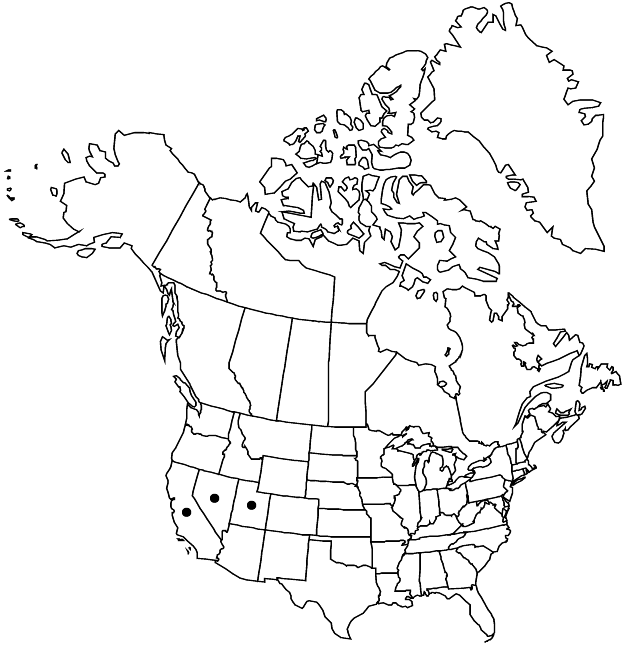Eriogonum esmeraldense
Proc. Amer. Acad. Arts 24: 85. 1889.
Herbs, erect to spreading, annual, (0.5–)1–5(–10) dm, glabrous or glandular proximally, mostly grayish. Stems: caudex absent; aerial flowering stems erect, solid, not fistulose, 0.5–1(–3) dm, glabrous or sparsely glandular proximally. Leaves basal; petiole 0.5–4 cm, strigose to hispid; blade obovate to round-ovate, 0.5–2.5 × 0.4–2 cm, sparsely strigose to pilose-hispid, often slightly glandular, grayish, greenish, or reddish on both surfaces, or reddish adaxially, margins plane. Inflorescences cymose, open to diffuse, 5–40(–70) × 5–50 cm; branches not fistulose, glabrous or sparsely glandular near proximal nodes; bracts 3, scalelike, 0.5–3 × 0.5–2 mm. Peduncles spreading to reflexed, straight, slender to filiform, 0.2–1.5 cm, glabrous. Involucres narrowly turbinate, 0.8–1.8 × 0.5–1.2 mm, glabrous; teeth 4–5, erect, 0.2–0.4 mm. Flowers 1–3 mm; perianth white to pinkish with greenish or reddish midribs, glabrous, minutely pustulose proximally; tepals monomorphic, oblanceolate to oblong; stamens included, 1–1.5(–1.8) mm; filaments glabrous. Achenes light brown, 3-gonous, 1.4–2.5 mm, glabrous.
Distribution

Calif., Nev., Utah
Discussion
Varieties 2 (2 in the flora).
Selected References
None.
Key
| 1 | Flowering stems and inflorescence branches glabrous | Eriogonum esmeraldense var. esmeraldense |
| 1 | Flowering stems and inflorescence branches glandular to sparsely glandular proximally | Eriogonum esmeraldense var. toiyabense |